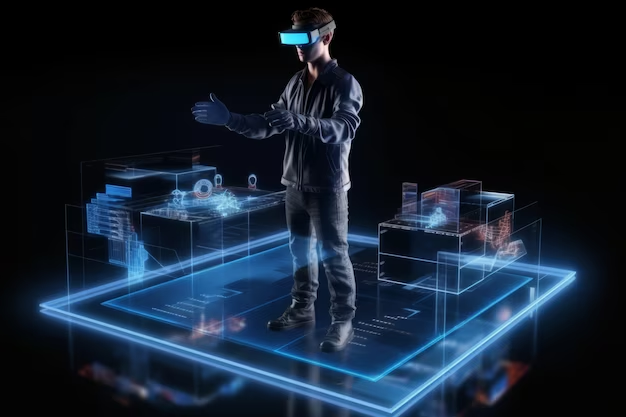The world is on the verge of a new era in connectivity, thanks to the advent of 5G technology. As the fifth generation of mobile networks, 5G is set to revolutionize how we connect, communicate, and consume information. With faster speeds, lower latency, and greater capacity, 5G is poised to change not only the way we use mobile phones but also how industries and everyday devices function. From smart cities to autonomous vehicles, 5G’s impact is far-reaching and transformative.
What is 5G Technology?
5G stands for the fifth generation of mobile networks, succeeding 4G (LTE). It brings a host of improvements, such as faster download and upload speeds, ultra-low latency, and the ability to connect a vast number of devices simultaneously. 5G operates on a variety of frequency bands, including low, mid, and high-band spectrums, each offering different advantages in terms of coverage, speed, and capacity.
One of the key features of 5G is its low latency, which reduces the time it takes for data to travel from one point to another. This is particularly important for real-time applications like virtual reality (VR), augmented reality (AR), and autonomous vehicles. Additionally, 5G has the capability to connect millions of devices within a small area, enabling the Internet of Things (IoT) to thrive and transform industries like healthcare, manufacturing, and agriculture.
How 5G Technology is Shaping the Digital World
1. Faster Speeds and Improved User Experience
One of the most anticipated benefits of 5G is its significantly faster speeds. With download speeds potentially reaching up to 20 Gbps, 5G will drastically reduce the time it takes to download large files, stream high-quality content, and play data-intensive games. This speed will also enhance mobile video conferencing, enabling seamless communication with little to no lag.
As a result, 5G will redefine what’s possible in terms of real-time content consumption, allowing for immersive experiences in virtual reality and augmented reality. Industries such as entertainment, education, and remote work will benefit the most from these improvements.
2. Revolutionizing Healthcare with Remote Medicine
5G’s ultra-low latency and high reliability will enable healthcare providers to offer more efficient and effective services. For instance, doctors will be able to perform remote surgeries using robotic arms, while real-time monitoring of patients’ health data can be done through connected wearables.
With 5G’s ability to handle a high volume of connected devices, hospitals and healthcare facilities will be able to better manage patient data, resulting in faster diagnoses and more personalized treatment plans. This will ultimately improve access to healthcare, especially in rural and underserved areas.
3. Smart Cities and the Internet of Things (IoT)
The future of cities is increasingly digital. Smart cities leverage IoT devices to optimize everything from traffic management and waste collection to energy consumption and public safety. 5G’s ability to support large numbers of devices in a small area with minimal delay will be key to unlocking the full potential of smart cities.
For example, 5G-enabled smart traffic systems can dynamically adjust to real-time traffic conditions, reducing congestion and improving the flow of people and goods. Similarly, connected sensors embedded in infrastructure can predict maintenance needs before they become critical, reducing costs and improving safety.
4. Autonomous Vehicles
One of the most exciting applications of 5G technology is in autonomous vehicles. Self-driving cars rely on real-time communication with their environment to make split-second decisions. 5G’s low latency ensures that data between vehicles and traffic systems can be transmitted instantaneously, allowing autonomous vehicles to make safer and more accurate decisions.
Moreover, 5G will enable vehicle-to-everything (V2X) communication, meaning cars will be able to communicate with each other, traffic lights, and even pedestrians, reducing the likelihood of accidents and improving traffic efficiency.
5. Industrial Automation and Manufacturing
5G will also have a significant impact on the industrial sector. In manufacturing, 5G will facilitate the rise of Industry 4.0, where factories are equipped with smart sensors and machines that communicate with each other in real-time. This will result in more efficient production lines, predictive maintenance, and reduced downtime.
Additionally, 5G will enable remote operation of machinery and robots, allowing for more flexible and efficient manufacturing processes. For businesses, this translates into cost savings, improved productivity, and enhanced competitiveness.
7 Frequently Asked Questions (FAQs) About 5G Technology
1. What is the difference between 4G and 5G?
The primary difference between 4G and 5G lies in speed, latency, and capacity. 5G offers download speeds up to 100 times faster than 4G, with much lower latency, which enables real-time communication for applications like autonomous vehicles and remote surgery.
2. When will 5G be available everywhere?
While 5G is already available in some regions, full global coverage will take time. The rollout of 5G infrastructure is complex and requires significant investment, so widespread availability may take several years.
3. Is 5G dangerous to health?
There is no conclusive evidence that 5G technology is harmful to human health. Regulatory bodies, such as the World Health Organization (WHO), have stated that 5G frequencies fall within safe limits.
4. How will 5G affect the cost of mobile plans?
Initially, 5G-enabled devices and plans may cost more, but over time, as the technology becomes more widespread and affordable, costs are expected to decrease. Ultimately, 5G will likely offer better value in terms of speed and performance.
5. Can 5G connect more devices than 4G?
Yes, 5G can connect significantly more devices per square kilometer than 4G, making it ideal for the Internet of Things (IoT) and smart cities.
6. Will 5G impact existing 4G networks?
5G networks will coexist with 4G networks in many areas for the foreseeable future. However, 5G will eventually replace 4G in terms of speed and capacity, especially as more devices and applications require higher performance.
7. What industries will benefit most from 5G?
Industries such as healthcare, automotive, manufacturing, entertainment, and logistics will benefit the most from 5G, with each gaining from faster speeds, lower latency, and enhanced connectivity.
Conclusion
5G technology represents a fundamental shift in how the world connects and communicates. With faster speeds, lower latency, and the ability to connect billions of devices simultaneously, 5G is unlocking new possibilities across industries. From healthcare and smart cities to autonomous vehicles and industrial automation, 5G will have a profound impact on both the economy and daily life. As the infrastructure for 5G continues to expand, the future of connectivity looks brighter than ever.
Key Takeaways
- Speed and Efficiency: 5G offers drastically improved download and upload speeds, changing how we consume content and interact with technology.
- Industry Transformation: 5G is set to revolutionize sectors like healthcare, transportation, manufacturing, and more by enabling real-time communication and data exchange.
- Connected Future: The rise of IoT, smart cities, and autonomous vehicles relies heavily on the capabilities of 5G to connect millions of devices seamlessly.
- Widespread Impact: While 5G’s benefits are most visible in tech-centric industries, its impact will be felt globally, from urban centers to remote regions, transforming the digital landscape.

